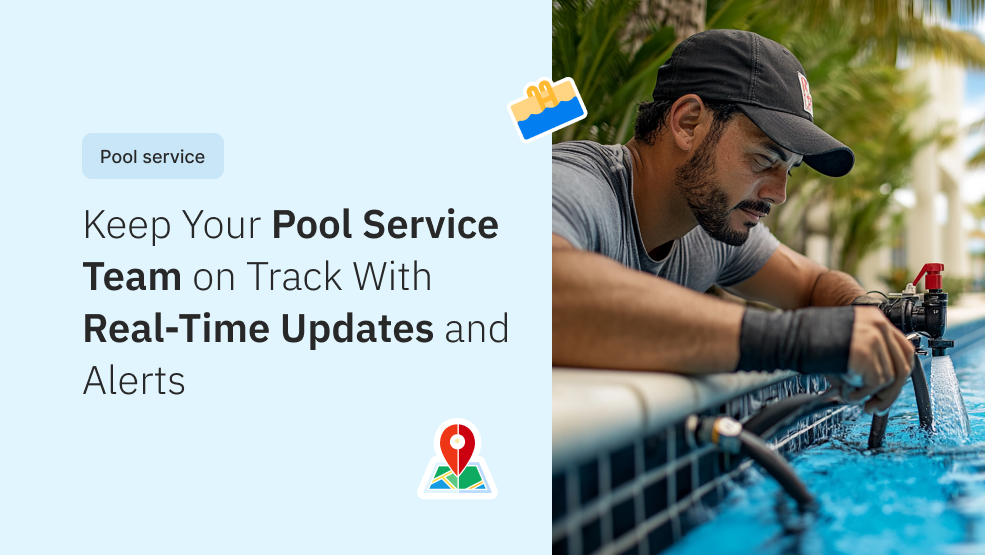Field technicians reflect the quality and integrity of your field service business. They are responsible for providing unparalleled technical support to your customers and are an essential part of the process every step of the way.
In this highly competitive market, every field service provider assures a superior quality of service. Having a trained and skilled field technician is integral to staying competitive.
Investing in the right employee training programs helps your field technicians to feel more confident in meeting customer demand. According to Axnoify,, 92% of employees find that well-planned training programs positively impact their customer engagement and satisfaction level.
This article will explore five key steps to consider when selecting an effective training program for your field technicians.
Customer service training programs for a field service technician
In the realm of field service, your technicians are not mere service providers but an extension of your brand. They reflect the quality of your business, so providing your customer with a fulfilling experience is paramount.
If you are a customer-centric business focused on delivering an exceptional service experience, then a customer service training program is mandatory.
A customer service program is structured and organized to help field service technicians provide value and build better customer relationships by enhancing their skills, knowledge, and behavior.
Your technician may be at the top of their game with technical skills, but customer interaction is a different ball game. Let’s take a look at some of the differences between technical training and customer relationship training.
Technical Training vs. Customer relationship training
Technical Training for Field Technicians:
- Focuses on developing technical knowledge and skills specific to the field technician’s job role.
- It covers equipment operation, troubleshooting techniques, maintenance and repair procedures, safety protocols, and technical specifications.
- Ensures field technicians have the necessary expertise to perform their technical tasks effectively and efficiently.
- Helps field technicians become proficient in using specialized tools, machinery, or software relevant to their field.
- Equips field technicians with the knowledge to identify and resolve technical issues or malfunctions on-site.
- Enhances field technicians’ ability to provide accurate and timely technical solutions or customer recommendations.
Customer Relationship Training for Field Technicians:
- Focuses on developing interpersonal and customer service skills for field technicians.
- Helps field technicians build positive relationships with customers, establishing trust and rapport.
- Equips field technicians with the skills to understand and address customer needs and concerns.
- Enhances field technicians’ ability to provide excellent customer service during on-site visits.
- Provides training on managing customer expectations, handling difficult situations, and ensuring customer satisfaction.
- Helps field technicians develop the ability to educate and train customers on product usage, maintenance, or troubleshooting.

Key factors to consider before choosing a field technicians training program
When you offer your technicians a training opportunity for professional and personal development, you construct a learning environment that benefits the entire organization. Your technicians develop various skills to achieve their career goals while you benefit from increased engagement and productivity.
Here are five key factors that you should consider while choosing a field technicians training program
1. Identify areas of growth
Before your technicians can excel in the field, you must know what skills are needed for them to succeed. This process involves careful assessment of technician competencies after identifying what is needed for their success.
Staying up-to-date with the latest advancements, technological shifts, and evolving customer demands informs the training needed to meet the changing markets.
2. Conduct skill gap analysis
Another critical factor to consider is the skill gap analysis.
A skill gap analysis is a process in which an organization analyzes current performance, identifies the lacking organizational skill, and develops suitable strategies to fill the gaps.
Gap analysis involves four main steps.
- Analyzing the current skill set of your employees
- Identifying what you would like your employees to achieve
- Finding the skills gap and possible solutions to bridge them
- Creating a plan to help address that gap
Gap analysis helps identify and plan a pathway forward from the current state to one aligning more closely with what you have in mind.
3. Aligning training programs to meet business goals
This step involves understanding the specific reasons for training your technicians.
Every organization has unique goals and benchmarks to achieve. This factor involves strategically evaluating company goals and objectives and identifying the employee’s impact on achieving those goals.
Building the business case for employee training and development also means getting top-level management support and employee buy-in. This ensures that the resources you put into developing and implementing a training program prove worthwhile.
4. Select the Right Training Tools
Once you identify your employees’ training needs, selecting an effective training tool helps you meet your company goals effectively.
Digital training software gives you the ability to personalize employee training programs. Personalized training places employees on the custom learning path that is most beneficial to their learning experience; these individualized paths are based on each employee’s needs, resulting in a superior learning experience.
Digital training tools generate custom learning experiences based on employees’ current responsibilities and future goals. This is a massive improvement over one-size-fits-all training since every lesson is relevant to each user.
By being flexible in offering training to your employees, you can cater to different learning methods and ensure self-paced learning.
You can even consider outsourcing the entire process to a professional company specializing in designing and delivering employee training programs.
5. Measure, Evaluate, and Track Progress
The last step in this process is to ensure that the resources you spent offering adequate employee training have been worthwhile.
Establishing KPIs can help you develop strategies to quantify your training and development program by factoring in time, cost, performance, and other indicators. This can help you identify the actual price and value of the training program.
Another benefit of continuous measurement and tracking is to assess how your employees respond to a particular training module. This can allow you to make adjustments and improve the process.
5 Steps Guide to Choosing an effective training program for your filed employees
Providing a well-designed training program can be a game-changer when it comes to the professional and personal development of your field teams.
Not only do they acquire the skills necessary to excel, but they will also benefit the organization with increased engagement and productivity.
1. Assess Your Training Needs
Assessing and identifying the areas where your field technicians need to grow is the first step toward selecting an effective training program. Conducting a needs assessment helps you determine which technician or team needs training, what training they need, and the best way to deliver it.
Additionally, by staying up-to-date with industry trends and evolving customer demands, you can pinpoint what training requirements are needed to meet the changing needs of your customers. This process helps you set targets and select effective training programs.
2. Researching Training Program Options
Once you understand and identify the growth areas, it’s time for you to research and evaluate the different training program options.
Look for programs that align with the identified skill gaps and offer comprehensive coverage of the required skills. Look for training providers’ reputation, content, delivery method, and duration.
Gathering as much information as possible will help you make an informed decision and select the program that best suits your field employees’.
3. Customizing Training for Your Field Employees
Every organization works towards achieving its set goals and benchmarks. Aligning employee training programs with set objectives will help employees acquire the skills necessary to accomplish organizational goals effectively.
Evaluate the training program’s impact on employees’ ability to contribute to the goals. It is vital to gain the support of your top-level management and obtain employee buy-in, as this will help create a business case for the training program. Customization is crucial in tailoring the training experience to your field employees’ requirements.
4. Assessing Training Program’s Effectiveness
Establishing key performance indicators (KPIs) helps you quantify the program’s impact and measure the success of your training programs at different stages of the process. Continuously tracking and measuring a training program’s effectiveness allows adjustments to provide the greatest benefits to employee learning while optimizing resources.
5. Considering Ongoing Support and Resources
Choosing an effective training program goes beyond assessing training needs and effectiveness. Try evaluating the availability of ongoing support and resources provided. Ongoing support and resources will help sustain the impact of the training program and enable continuous development for your employees working in the field.
If you need to know whether you Try asking these questions.
- Will there be post-training support to address any questions or challenges that arise?
- Are there additional learning materials or resources available to reinforce the training?
Conclusion
Selecting an effective training program for your field employees is a strategic investment that significantly benefits both individuals and the organization. By following these five steps—assessing training needs, researching program options, customizing the training, assessing effectiveness, and considering ongoing support—you can make an informed decision that empowers your employees in the field to excel in their roles. Remember, investing in their professional and personal growth is an investment in the future success of your organization.






